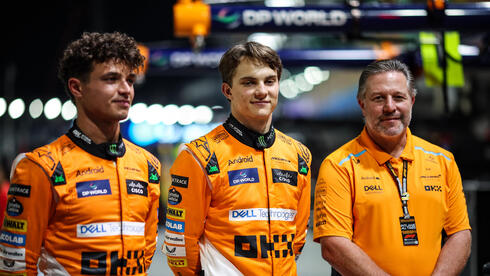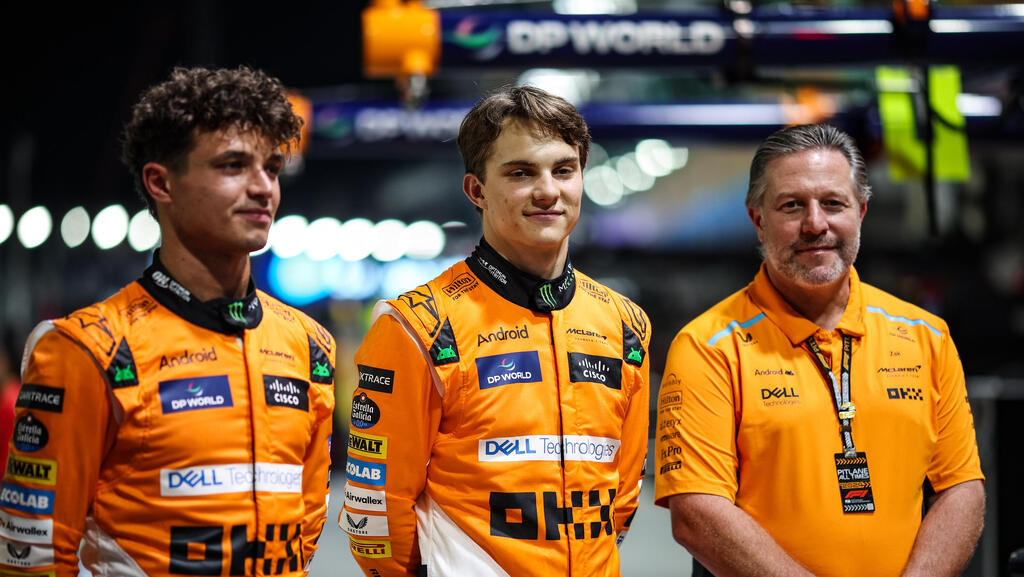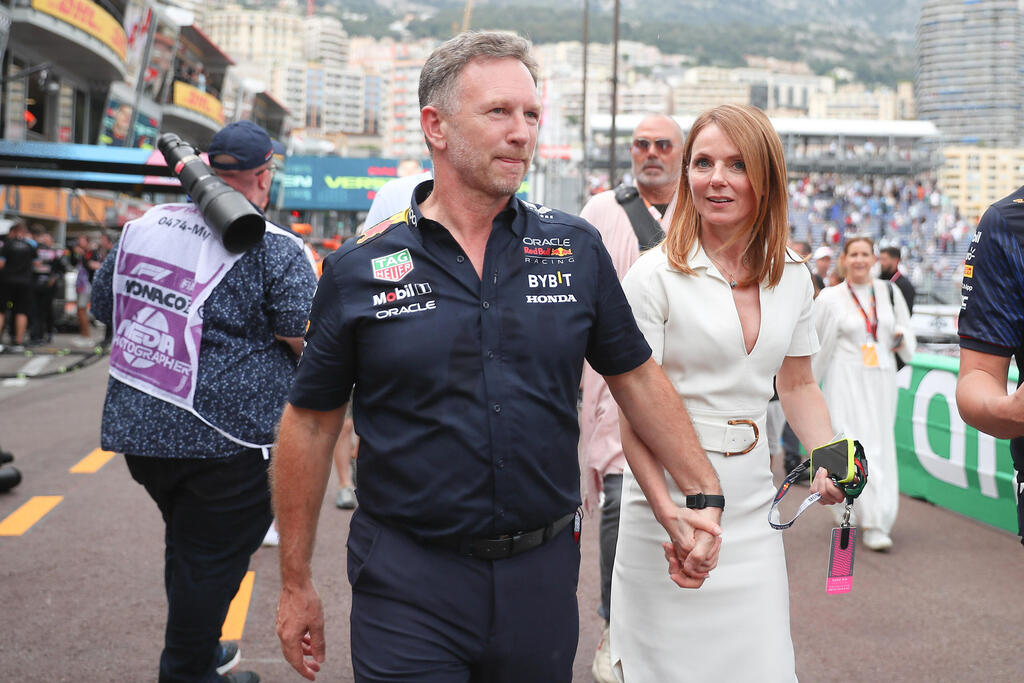
From Red Bull dominance to McLaren's comeback: How Formula 1 is turning on its head
Ferrari’s win in Austin and McLaren’s rapid rise signal a shifting power dynamic in F1, leaving Verstappen's title streak under threat.
The big winners at the Grand Prix of Austin, Texas, held last Sunday, were Charles Leclerc and Carlos Sainz of Ferrari. However, the real competition that captivated the spectators in the Formula 1 race was for third place, between the two stars of the season: Dutch driver Max Verstappen of the Red Bull team, who has held the world champion title for three consecutive years, and British driver Lando Norris of the McLaren team, who has been challenging Verstappen all season and threatening to overtake him.
The action was exactly what Formula 1 fans had been waiting for. After a poor start that dropped him from first to fourth, Norris closed the gap on Verstappen and stayed on his tail for ten full laps, with less than a second separating them. Eventually, Norris managed to pass Verstappen and finish third. The problem, however, was that Norris overtook Verstappen off the track, after Verstappen had deliberately forced him wide, resulting in a five-second penalty that relegated Norris to fourth place.
The race in Austin offered a great example of the drama unfolding this season in Formula 1, after three years of dominance by Verstappen and Red Bull. Last year, before even reaching the Austin race, Verstappen led by 209 points over the second-place driver in the standings—a lead so massive that it guaranteed his championship even if he didn’t score another point for the rest of the season. In the team standings, Red Bull was 331 points ahead of second-place Mercedes, making the outcome a foregone conclusion. Red Bull was in a league of its own, and it became very boring.
But this year, everything has changed. Red Bull is no longer leading the championship and now trails the British McLaren team by 44 points. No one knows how this season will end. Although Verstappen still leads Norris by 57 points, an accident or technical failure in one of the upcoming races could easily halt his championship streak. The competition is wide open.
How did this all happen? What caused the once-invincible Red Bull to falter? And how did McLaren, a team that hasn’t won a championship since 1998 and only finished fourth last season, suddenly become the hottest name in Formula 1?
The secret is in the sponsors
To understand the transformation in Formula 1, you need to start by comparing the appearance of McLaren’s cars before and after CEO Zak Brown’s appointment in 2016. The key changes aren’t in the design of the cars but in the number of sponsor logos on them. Up until eight years ago, McLaren's cars were almost devoid of sponsor branding.
“At that time, sponsors abandoned McLaren because it wasn’t delivering results. All it had left was its name—until Zak Brown arrived,” explains Uriel Ben Haim, a mechanical engineer from Givatayim who manages the Facebook group "Formula 1 Israel" and co-hosts the podcast “The Grid” with Amit Perez. “Brown is an outsider. He’s not an engineer, he’s American in a sport dominated by Europeans, and more importantly, he comes from the worlds of marketing and sales, unlike many managers in the industry who started as engineers. Brown’s strength is marketing. He decided McLaren should return to its roots by painting the cars in the team’s historic papaya orange color, just as red is associated with Ferrari. Then, through his skillful networking, he attracted a lot of sponsors.”
While the drivers play a significant role in Formula 1, even the most talented driver can’t win in a car that isn’t fast enough compared to its competitors. To develop a competitive car, a lot of money is needed, and with the influx of funds from sponsors, McLaren was able to invest heavily in research and development. Like startups, Formula 1 teams allocate up to 40% of their resources to R&D to find innovative ways to make the cars faster, whether by improving aerodynamics, tweaking weight distributions for better "stick" to the track, or pursuing countless other upgrades.
With the big money now flowing in, McLaren embarked on a long and painstaking process of upgrades, the fruits of which are evident in the current season. Brown made it clear to his team that his strategy was focused on stable, sustainable growth rather than short-term success. He worked on boosting team morale and strengthening the group, which had not seen major successes in years. In 2017, McLaren ended its partnership with Honda, which had supplied its car engines, and instead partnered with Renault for two years before switching to Mercedes. Each change had significant financial, engineering, and design implications, but Brown did not shy away from making tough decisions, solidifying his authority within the team. He also restructured management and brought in key personnel from the engineering field.
An example of one of Brown’s expensive and long-term decisions is provided by Ben Haim: “During the pandemic, he convinced the board of directors to build a state-of-the-art wind tunnel at McLaren’s base in England. Before that, they had been using a Toyota wind tunnel in Germany. While having your own wind tunnel doesn’t guarantee success, it improves the correlation between what you test and how the car performs on the track. Thanks to this tunnel, their ability to adjust the car for each track has improved significantly.”
Then there’s the matter of the drivers. “McLaren’s two drivers, Norris and Australian Oscar Piastri, are very different, but both are highly skilled,” says Ben Haim. “Norris, who has been with the team since 2019, is part of McLaren’s rebuilding process. In February 2022, he renewed his contract for four more years, which raised eyebrows because McLaren hadn’t yet broken through, and Norris was highly sought after. Now, it seems he’s starting to fulfill that promise.”
Piastri, meanwhile, is only 23, in just his second season in Formula 1, and already stands out. “Once in a while, a driver comes along who quickly adapts and becomes dominant early in their career. Piastri is one of those drivers. He’s mature, calm under pressure, and has no problem admitting his mistakes.”
The founder is dead, the heirs are many
But the story of this Formula 1 season isn’t just McLaren’s rise—it’s also Red Bull’s relative decline. That decline began two years ago, with the death of Dietrich Mateschitz, the Austrian billionaire who founded the Red Bull energy drinks company and the Formula 1 teams. Mateschitz’s death at age 78 destabilized the team due to internal power struggles.
The Red Bull business group is 51% owned by Chaleo Yoovidhya. Mateschitz held 49% of the shares and was the sole decision-maker for the racing team. After his death, his share passed to his son, Mark Mateschitz, but Yoovidhya refused to allow the younger Mateschitz to take control of the racing team.
“Mateschitz’s death brought about changes,” said Helmut Marko, a senior advisor to the racing team, in a recent interview with Austrian Public Broadcasting. “He was a charismatic entrepreneur with a vision, willing to take risks, and decisions were made quickly. Without him, the team is restructuring, and it’s impossible to replace him with just one person.”
Red Bull is now divided into two rival camps: one led by Christian Horner, the team manager, and another led by Marko, who is close to Verstappen. Horner tried to have Marko fired, but Verstappen made it clear that if that happened, he would leave. Verstappen’s father, Jos Verstappen, even called for Horner’s resignation to restore peace within the team.
Horner, who is married to Geri Halliwell of the Spice Girls and a star of Netflix’s “Formula 1: Drive to Survive,” has also been embroiled in controversy. Last year, an employee filed a complaint against him, accusing him of inappropriate and domineering behavior. Red Bull conducted an internal investigation that cleared Horner, but hundreds of screenshots of his interactions with the complainant were leaked, sparking further scandal. In March, it was reported that Red Bull had suspended the complainant while continuing to pay her salary. She has since filed an appeal and is considering suing the company.
A Team in Turmoil
The turmoil surrounding Horner has disrupted Red Bull’s stability, impacting everyone from the technical team to the drivers. Sergio Perez, who was a reliable second driver to Verstappen, has been involved in a series of costly mistakes and crashes this season, including one at the Monaco Grand Prix and another at the Canadian Grand Prix. These errors cost the team millions and contributed to their loss of the lead in the championship.
Even Verstappen, typically calm under pressure, has made uncharacteristic mistakes. At the Austrian Grand Prix in June, he collided with Norris, causing both cars to lose a tire. While Verstappen managed to continue the race, Norris was forced to retire.
Red Bull initially claimed that its car struggled on bumpy tracks because it had to be raised, which affected its performance. But as the season progressed, it became clear that their car simply wasn’t as fast as McLaren’s.
With key figures leaving the team and internal conflict continuing, Red Bull's dominance appears to be faltering.















